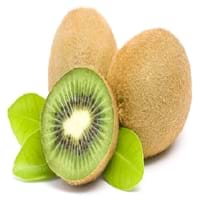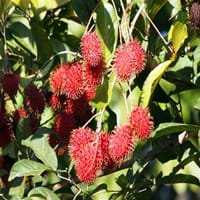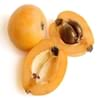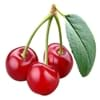Health Benefits
Asthma treatment, Heart care, Prevents constipation, Treatment of skin Diseases
Anti-oxidant properties, Boosts immune system, Skin rejuvenation, Strengthening of bones
General Benefits
Boosts immune system, Controls blood pressure, Eye care, Helps in weight loss
Antiseptic properties, Cures headache, Removes waste from kidney
Skin Benefits
Brightens and lightens complexion, Heals sunburn, Reduces wrinkles, Skin rejuvenation, Treatment of acne, Treatment of dark spots, Treatment of skin diseases
Hydrates skin
Hair Benefits
Prevents hair loss, Promotes longer and healthier hair, Treatment of dandruff
Good conditioner
Allergy Symptoms
Abdominal pains, Anaphylaxis, Breathing difficulty, Itching in tongue and other parts of mouth, Itching sensation in throat, Swelling of mouth, tongue or lips, Vomiting
Chest pains, Rhinitis, Wheezing
Side Effects
Allergic reaction, Diarrhoea, Skin rash, Possibly unsafe during pregnancy
Unknown
Best Time to Eat
Any time except an hour after meal, Don't consume at night and before bed
As a snack in the late afternoon, Don't consume at night and before bed, Eat the fresh ones, avoid mixing with any other foods, don't eat after meal., Morning time (before lunch)
Vitamin B5 (Pantothenic Acid)
Vitamin C (Ascorbic Acid)
Vitamin K (Phyllochinone)
Phytosterol
Not Available
Calories in Fresh Fruit with Peel
Calories in Fresh Fruit without Peel
Not Available
Not Available
Calories in Frozen Form
Not Available
Calories in Jam
Not Available
Calories in Pie
Not Available
Type
Tropical
Tree fruit, Tropical
Season
Spring, Summer, Winter
Early summer, Early winter, Late fall, Late spring
Varieties
Zhong Hua, Jing Li, Ruan Zao, Mao Hua and Huang Yan
Rongrien, Chompu, Rapiah, Bingjai and Lebak Bulus
Color
Brown, Green
Coral red, Yellow
Inside Color
Green
Greyish-white
Taste
Sour-Sweet, Tangy
Sour, Sweet
Soil Type
Well-drained
Clay, Loam
Climatic Conditions
Cold, Sunny
Humid
Facts about
- The name Kiwi is due to the resemblance with 'Kiwi' bird.
- Animals like monkeys and deer also consume Kiwifruit.
- Originated in china, this fruit is also called as 'Chinese gooseberry.'
- Oils extracted from its seeds is used to make soaps and candles.
- 'Rambut' means hairy in Malay.
- It makes the best hair mask.
- Seeds are edible and healthy too.
Top Producer
Italy
Thailand
Other Countries
Chile, France, Greece, Iran, Japan, New Zealand, Portugal, Turkey, United States of America
Africa, India, Indonesia, Malaysia, Philippines, Sri Lanka
Top Importer
United States of America
Singapore
Top Exporter
New Zealand
Thailand
Botanical Name
Actinidia deliciosa
Nephelium lappaceum
Synonym
Not Available
Rambota
Subkingdom
Tracheobionta
Tracheobionta
Division
Magnoliophyta
Tracheophyta
Class
Magnoliopsida
Magnoliopsida
Subclass
Dillenhidae
Rosidae
Order
Ericales
Sapindales
Family
Actinidiaceae
Sapindaceae
Genus
Actinidia
Nephelium
Species
A. deliciosa
N. lappaceum
Generic Group
Kiwi
Not Available
Difference Between Green Kiwi and Rambutan
We might think that Green Kiwi and Rambutan are similar with respect to nutritional value and health benefits. But the nutrient content of both fruits is different. Green Kiwi and Rambutan Facts such as their taste, shape, color, and size are also distinct. The difference between Green Kiwi and Rambutan is explained here.
The amount of calories in 100 gm of fresh Green Kiwi and Rambutan with peel is 61.00 kcal and 69.00 kcal and the amount of calories without peel is Not Available and Not Available respectively. Thus, Green Kiwi and Rambutan belong to and category.These fruits might or might not differ with respect to their scientific classification. The order of Green Kiwi and Rambutan is Ericales and Sapindales respectively. Green Kiwi belongs to Actinidiaceae family and Rambutan belongs to Sapindaceae family. Green Kiwi belongs to Actinidia genus of A. deliciosa species and Rambutan belongs to Nephelium genus of N. lappaceum species. Beings plants, both fruits belong to Plantae Kingdom.









